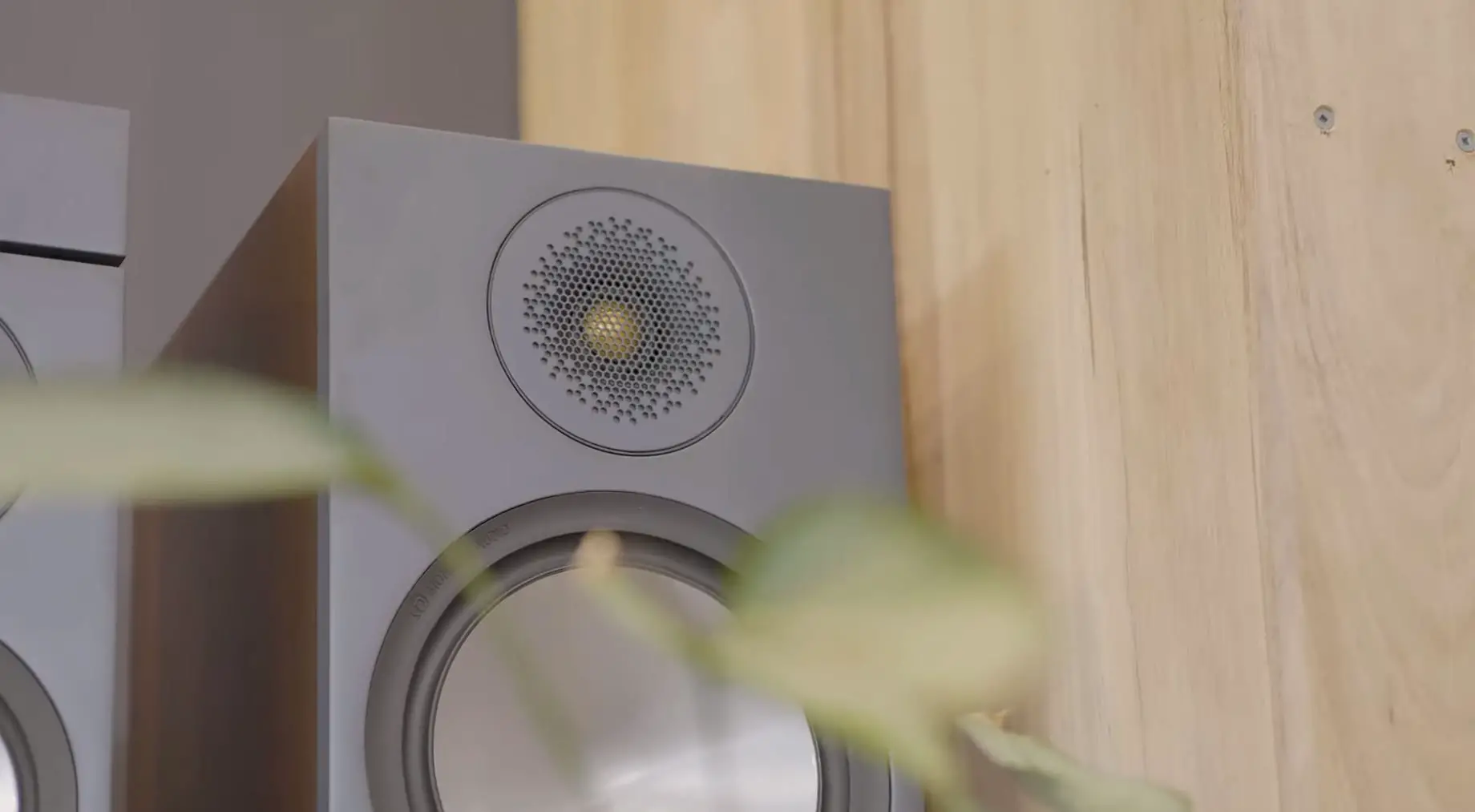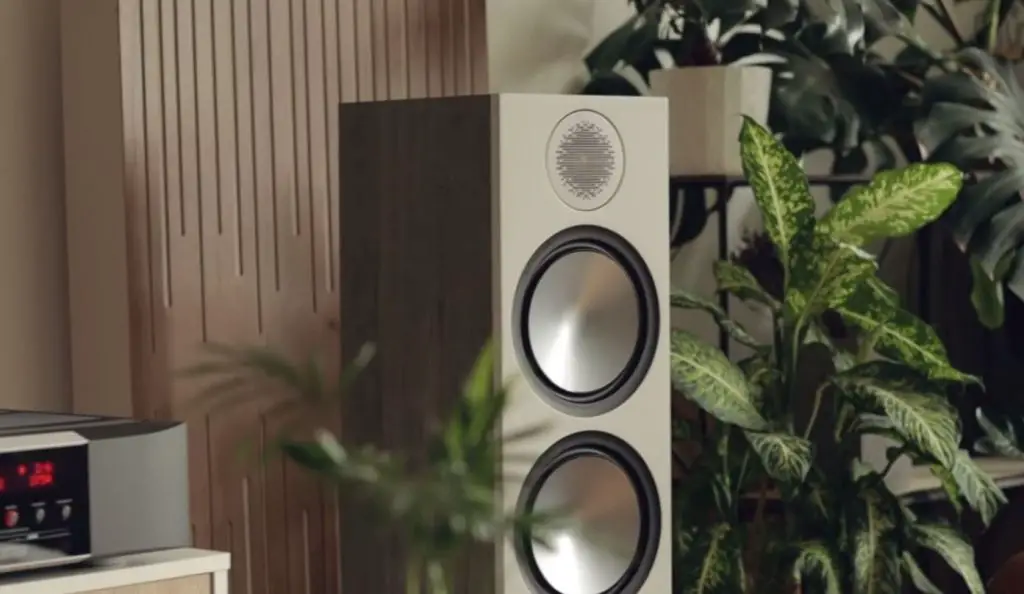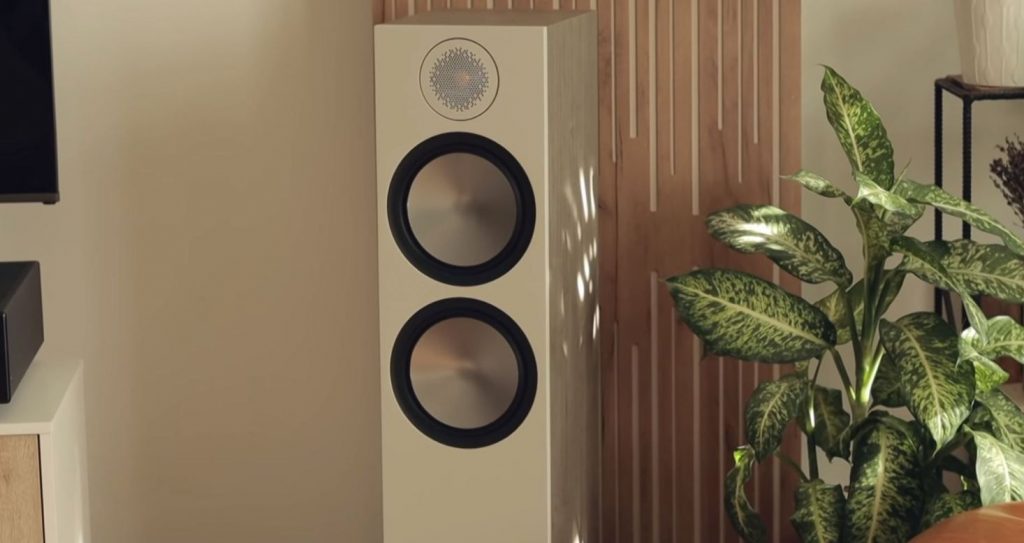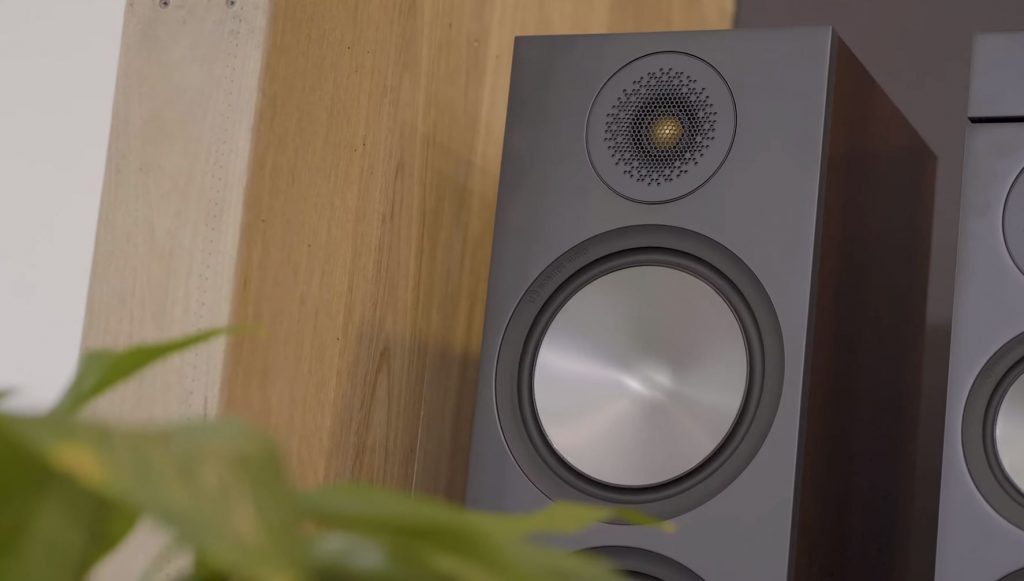Monitor Audio Bronze 500 Review
When it comes to Monitor Audio, it’s hard not to think of the “golden treble”. At that time, Monitor Audio used an aluminum-magnesium alloy diaphragm with a layer of ceramic coating on the surface, which was painted with a gold-like color. Why is it golden? No one knows the real truth, and Monitor Audio only said this would help the treble be more supple. In this way, a design that has never been clearly stated has become a classic. The golden tweeter has become a legend in the history of the modern audio speaker.
However, later, in order to pursue better audio performance, Monitor Audio began to switch to Air Motion Transformer (AMT) in mid-to-high-end products. AMT has high sounding efficiency and low distortion, making Monitor Audio speakers that use AMT have a more vivid sense of color. Whether it is the Platinum series or the Gold series, this sense of color is prominent, and the music is therefore richer.
In this way, the Bronze series shows its value because the current sixth-generation Bonze 6G series has an affordable price and retains the golden tweeter design. Although the structure is simplified, not like the Silver series adopts the mid-high frequency modular design, it still shows its charm everywhere. We can see Monitor Audio’s attempt to catch the consumer’s attention with the Bronze 6G series.
The Bronze 6G series has diversified products, including floor-standing speakers, bookshelf speakers, center-mounted speakers, and even subwoofers. Consumers can buy all of them to form the Bronze 6G home theater system. Among them, the largest speaker in the entire series is the Bronze 500.
Design
Bronze 500 adopts a 2.5-way design. The tweeter and two mid-bass drivers are all made of C-CAM diaphragm technology. That is, the surface of the aluminum-magnesium alloy diaphragm is coated with a ceramic coating. In this way, the hardness of the metal and the damping feature with ceramics are all taken into account. This golden tweeter is called C-CAM Gold, which is different from the golden tweeter of the old Monitor Audio speakers. More advanced technology can create a better-performing unit.
There is a waveguide with holes in front of the tweeter, which controls the spread of sound waves through holes of different sizes and in an orderly arrangement. Monitor Audio said that this waveguide could make the sound more vivid.
The two 8-inch woofers are also designed with C-CAM diaphragms, but the surface is not golden. The 8-inch bass voice coil is specially enlarged to improve the control of the magnetic system. Concave instead of the traditional cone-type diaphragm, the shape and curvature are calculated by finite element analysis to design the best geometry. Damped Concentric Mode (DCM) technology helps to regenerate the sounds clearly and precisely mid-bass. The upper mid-bass is responsible for connecting with the treble below 2700Hz, and the lower one is used to supplement the bass below 500Hz.
The HIVE II reflective hole design accelerates the airflow and reduces airflow noise. Rear ported designed speakers need to be careful not to make people feel the presence of the bass port. Monitor Audio’s efforts are for this.
The bottom of the speaker is made of stainless steel extension feet, and a sizeable height-adjustable foot cone is designed.
On the whole, Bronze 500 applies Monitor Audio’s C-CAM single technology, HIVE II diversion technology, and DCM diaphragm geometry technology. With its entry-level positioning, it incorporates several technologies, fully demonstrating the sincerity of the audio company.
Sound Performance
The sound of the Bronze 500 is magnificent and full of energy. Although the height is less than one meter, with two 8-inch bass woofers, the bass is also similar. Although there is no Air Motion Transformer (AMT) unit, the treble is still beautiful.
The speaker can be positioned well easily. Whether it is front-facing or slightly toe-in, it is easy to pull out the open sound field and condense the specific sound image. And the presence of the speaker is not felt.
Take Eiji Oue’s “Fanfare for the Common Man”, conducted by New York Philharmonic, as an example. This album is only played by bass drums, timpani, and a little few instruments. Although it’s just one small piece, it is full of shock.
In the beginning, it was beaten vigorously with drums, which were intense and violent, and then gradually weakened, preparing to bring out the theme. The trumpet took the lead in pulling up, a simple melody but full of hope and strength. Bronze 500 makes the trumpet sound bright and brilliant, full of golden colour.
After the French horn joined, the sound of the horn was given a more gentle layer, and the trombone that came in subsequently added thickness to the sound. Bronze 500 is satisfying, whether it expresses the power of percussion and the shock of bass or shows the colour, lustre, and texture of copper pipes. In addition to the excitement at the beginning, the timpani combo at the end, the hearty and clear drum beats quickly and powerfully, sounds enjoyable.
Such drums, such copper pipes, made me want to hear Sibelius’s “Finlandia”. At the beginning of the music, the bass trumpet chants with a majestic voice, a tragic and lonely atmosphere fills the air, and the timpani rolled from the back makes the mood tense. The music gradually goes away, the woodwind group and string group appear, the entire music scene unfolds, and the various parts are clearly located. When the string gushes out, it has a thickness and a full sense of brightness.
Monitor Audio has been developed to this day. However, the sound characteristics are still there, especially the colour and brightness passed down from generation to generation, just like DNA.
How fierce the Bronze 500 is, Christopher Tin can also verify. Listening to the soundtrack album of “Calling All Dawns”, the first track “Baba Yetu“, orchestral and vocals, the harmony is thick, and the scale is enormous. The sound field produced by Bronze 500 is wide, and the music is full of energy when the music is pulled up. Even if I deliberately turn the volume up, the sound field can be maintained.
At this time, I noticed that the Bronze 500 could be very well driven easily. You don’t have to turn up the integrated amplifier very loud that it can emit a compelling volume.
The female voice of the second track, “Mado Kara Mieru”, is sweet and has a clear outline. After the song is unplugged, it carries a little bit of pressure, but it can affect emotions. The orchestral accompaniment is magnificent, the layered music texture, and the considerable fluctuations in dynamics. The replay of this album is not simple, but the Bronze 500 has an open, atmospheric, confidence, and hearty tone.
I prefer to listen to Bronze 500 to play jazz. It has full bass, vivid details, three-dimensional imaging, and is good at expressing human voices. Take Diana Krall’s “Love Scenes” album as an example. In addition to singing, Diana Krall also plays the piano with double bass and guitar accompaniment.
Bronze 500 can clearly show Diana Krall’s slightly hoarse and thick vocals. Those transitions, those endings, those air sounds, and those throat rhymes, all with pictures. The bass sounds full and deep, and the double eight-inch bass of the Bronze 500 makes its bass sound full and relaxed.
Monitor Audio did not deliberately pursue digital low-frequency extension but made sense of low-frequency looseness. It is really rare to hear it on such affordable floor-standing speakers.
Listening to the song “Stimela” by Hugh Masekela, the beginning of the drum sound pulled out a stage depth, with a steady rhythm from small to large, simulating the dynamics from far to near. Masekela spoke, listening to his story, was also taken into the miserable years of those mine workers. When he was speaking, the orchestra behind him softly accompanies him. The soft horn he played is different from the trumpet. The voice is warmer, and the pitch is slightly lower, but the story is full of emotion. This song sometimes dives and jumps, and the dynamic changes during the period are drastic.
Bronze 500 expresses these ups and downs, smooth and natural. The drum sounds are sleek and with a somewhat flexible texture. The Bronze 500 is not looking for strong, outrageous, fast, and strong drums. The drums it shows in classical repertoires are strong but loose. The drums in jazz and blues music show a bit of flexibility.
Listening to Michael Jackson, the Bronze 500 is just as exciting. The electronic rhythm of “They Don’t Really Care about Us” is strong, but it does not pursue the low frequency of deep weight but the rhythm of speed. That is the strength of Bronze 500. The Bronze 6G series is originally suitable for theatre use. Speed is not a problem, and it really needs low-frequency thickness and dive and a reliable subwoofer to make up.
Conclusion
Suppose you want to ask about the texture. In that case, the Monitor Audio Gold series and Platinum series speakers have obviously better sound quality, and the density and thickness of the sound are better than the Bronze 500.
However, if you have limited budgets, The Bronze 6G series can be used as a starting point for listening to music, and it can also be used as a starting point with Monitor Audio.
Monitor Audio Bronze 500 Specs
- System Format: 21/2-Way
- Frequency Response (-6 dB): 41 – 25,000 Hz (Free field) / 32 – 30,000 Hz (In room)
- Sensitivity (2.83v @ 1m): 90 dB
- Nominal Impedance: 8 ohms
- Minimum Impedance: 4.1 ohms
- Maximum SPL: 116 dBA (pair)
- Power Handling (RMS): 200 W
- Recommended Amplifier Requirements: 60 — 200 W
- Bass Alignment: Bass reflex Dual HiVe II port system
- Crossover Frequency: 550 Hz, 2,700 Hz
- Drive Unit Complement: 2 x 8″ C-CAM midbass driver / 1 x 25 mm C-CAM Gold Dome tweeter with UD Waveguide
- External Dimensions (Including Grille and Terminals (H x W x D)): 951 x 231 x 325 mm (377/16 x 91/8 x 1213/16″)
- External Dimensions (including Outrigger Feet and Spikes (H x W x D)): 974 x 294 x 364 mm (383/8 x 119/16 x 145/16″)
- Weight (each): 18 kg (39 lb 11 oz)




